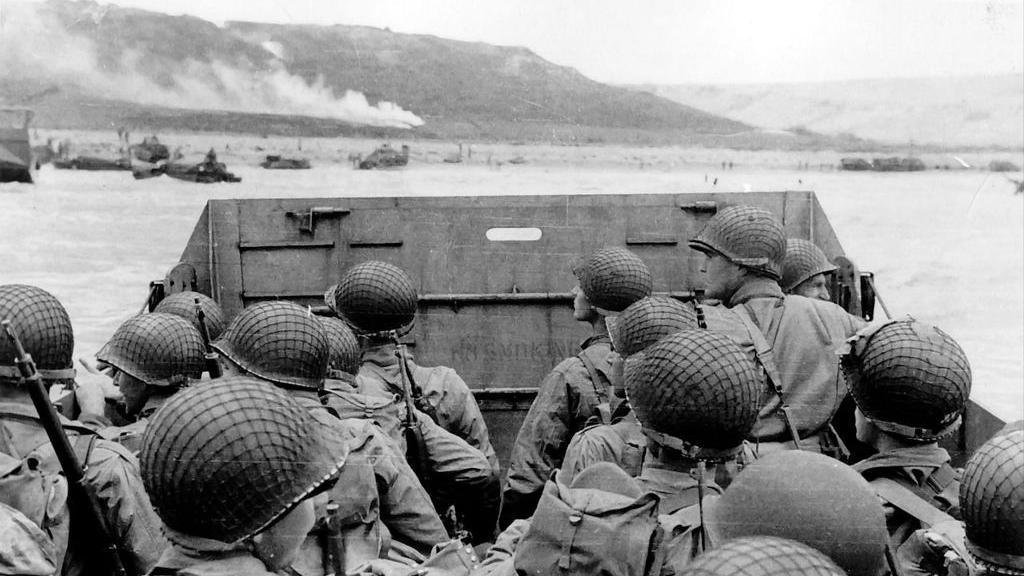The Dunstable forecast that changed the D-Day date
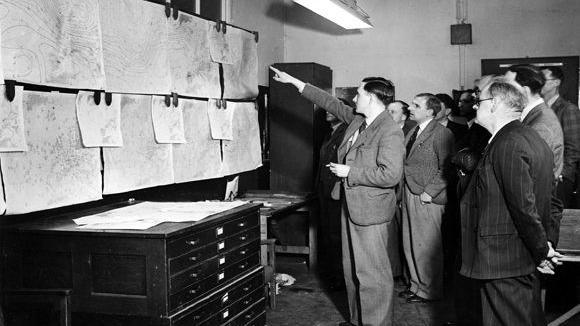
A daily conference took place at the Dunstable offices
- Published
Met Office forecasters relocated out of London during World War Two played a "phenomenal" role in having the date of the D-Day landings changed, a historian has said.
Troops were due to land on the coast of northern France on 5 June 1944 but it was switched to 6 June after advice from forecasters restationed to Dunstable in Bedfordshire.
Jean Yates, an author from the town, said Group Captain James Martin Stagg, the chief meteorological adviser, was tasked with deciding which of three weather forecasts to go with.
He chose the Dunstable forecast, which ultimately saved thousands of lives, she added.
In 1940, the Met Office relocated to where Weatherfield Academy, on Brewers Hill, is now based, and remained there until 1961, Ms Yates said.
"It was top secret stuff," she said.
D-Day: Using the weather for a military advantage
- Attribution
- Published6 June 2024
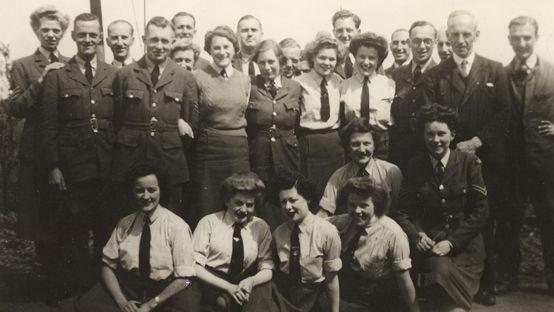
Met Office staff during World War Two. Some were maths and physics teachers
Ms Yates said people knew it was based there, but the building was camouflaged - and it was guarded by armed police.
The location was "geographically spot on" as it was close to Post Office lines that ran along the A5 and the Downs, which helped provide a clearer reception.
It was also close to Bletchley Park, external, the base of the renowned World War Two Codebreakers.
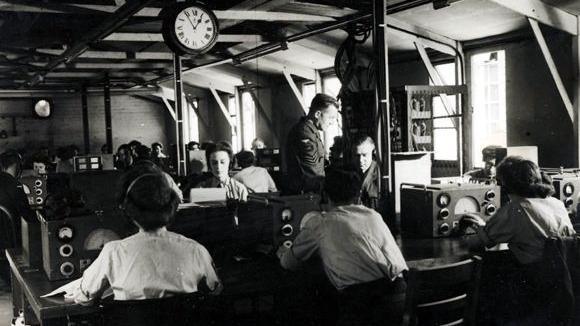
The Met Office communication room relocated to Dunstable in 1940
Stagg managed to persuaded General Dwight D. Eisenhower to hold the date for the landings for 24 hours for a window of quieter weather, she said.
"There were three Met Office forecasts," she said, "one from Dunstable, one from Americans based in Teddington, London, and the Admiralty had their own Met forecasters.
"Stagg was tasked with reporting to Eisenhower and it was his decision who got the right forecast, as all three varied considerably, but he decided to go with the Dunstable forecasters.
"He stopped D-Day from happening on 5 June, Dunstable proved to be right.
"It was phenomenally important, you can't stress how important it was."
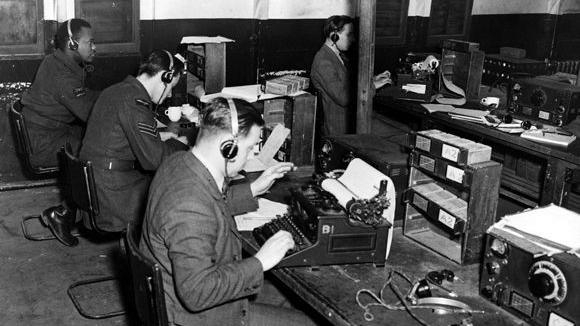
The Met Office was due to move out of London in 1939 but relocated to Dunstable in 1940
There was another option apart from 5 June, Ms Yates added, which was to wait two more weeks.
"But on 19 June there was the worst storm in The Channel for 20 years," she said.
"It was unexpected, and if we had gone we could have lost hundreds of thousands of men, and that would have been disastrous for the outcome of the war.
"Everyone is very proud that Dunstable played such an important part."
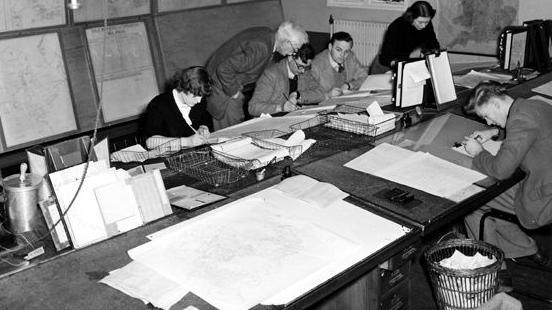
The forecast by the Dunstable-based Met Office team was the reason the D-Day landings were moved back 24 hours
A beacon was lit on Dunstable Downs to mark the D-Day landings on Thursday night, after the National Trust, which runs the site, reversed its decision not to allow it.
There was a public outcry when it was thought the event wouldn’t happen.
Follow Beds, Herts and Bucks news on Facebook, external, Instagram, external and X, external. Got a story? Email eastofenglandnews@bbc.co.uk, external or WhatsApp us on 0800 169 1830
Related topics
- Published1 May 2024

- Published26 April 2024
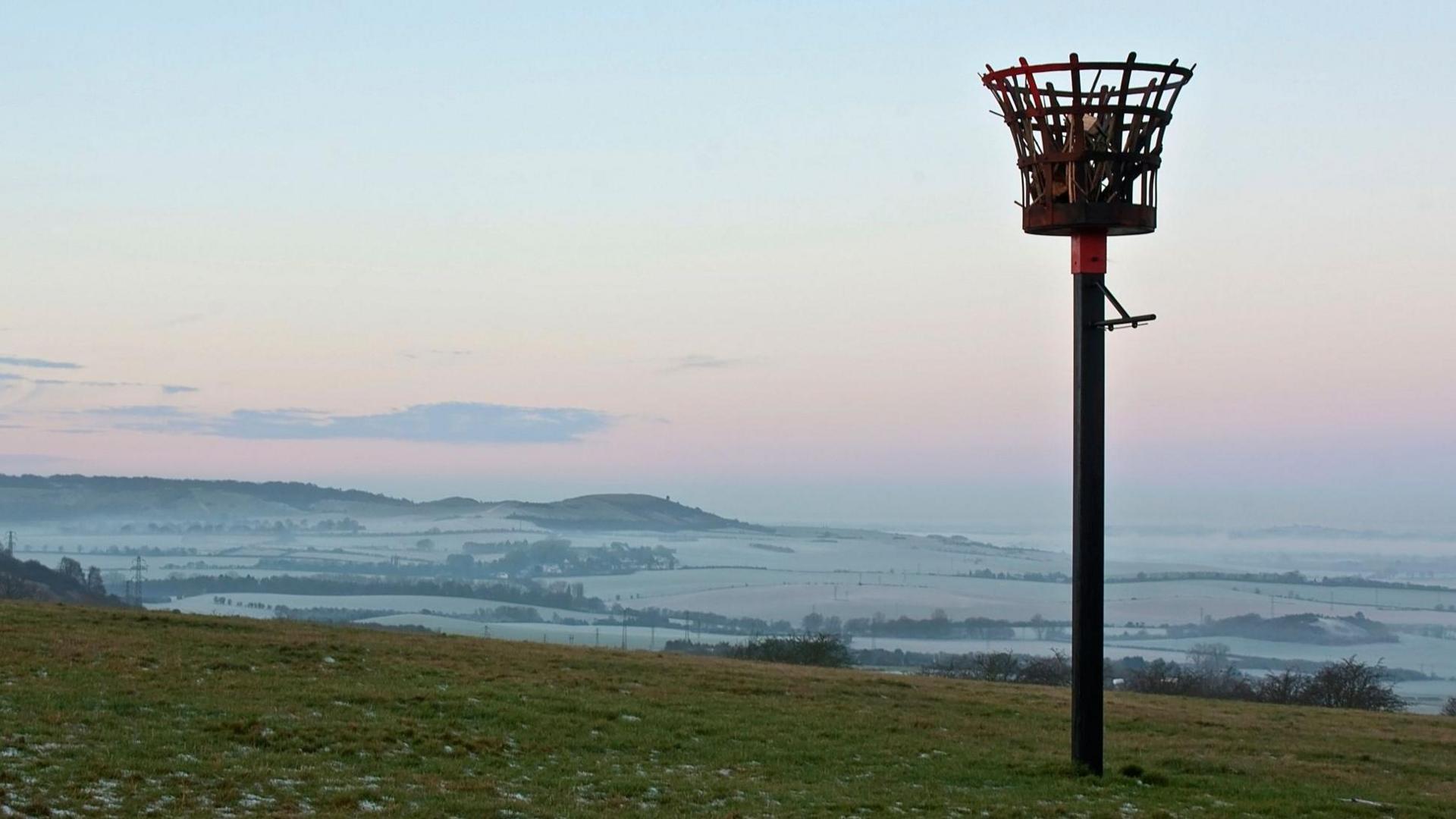
- Published6 June 2024
